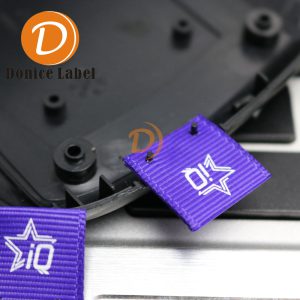Washing label solution
A washing label solution is a comprehensive guide for manufacturers and consumers on how to care for textiles and garments to maintain their quality, shape, and durability over time. The solution encompasses the design, material choice, printing method, and the symbols or instructions included on the label. It aims to provide clear, accurate, and easy-to-understand care instructions to help customers properly clean their clothing and home textiles.
Key Elements of a Washing Label Solution:
Clear Care Symbols and Instructions
A washing label should include internationally recognized symbols, which are essential for communicating fabric care instructions without language barriers. These symbols usually represent:
Washing: The water temperature, hand or machine washing, and gentle cycle instructions.
Drying: Whether the item should be air-dried, tumble-dried, or dried flat.
Ironing: The appropriate temperature for ironing and whether steam should be used.
Bleaching: Whether bleach is safe to use or should be avoided.
Dry Cleaning: Instructions for professional cleaning, including any specific requirements.
Material Selection
The choice of fabric for the washing label is crucial for its longevity and functionality. Common materials for washing labels include:
Woven Labels: Durable, long-lasting, and resistant to fading. Ideal for garments that are frequently washed.
Printed Labels: Cost-effective and suitable for mass production, printed labels can be clear and precise if printed with high-quality ink.
Heat Transfer Labels: These labels are applied using heat to transfer the design onto the fabric. They are smooth, comfortable, and durable.
PVC or Silicone Labels: For extreme durability and water resistance, these labels are often used in workwear or outdoor gear.
Durability of the Label
A key part of the washing label solution is ensuring the label can withstand multiple wash cycles, exposure to heat, water, and detergents. Labels made from durable materials like polyester, nylon, or satin help prevent fading and peeling over time. The printing methods used should also be resistant to fading under harsh washing conditions.
Sustainability Considerations
As sustainability becomes more important in the textile industry, many brands opt for eco-friendly and biodegradable washing labels. These solutions might include materials like organic cotton or recycled polyester, which help reduce environmental impact while still offering effective care instructions.
Size and Placement of the Label
The label’s size and location are important factors in ensuring the care instructions are easy to find and read. It should be positioned in a way that is accessible and not irritating to the wearer. Common placements include the neck or side seam for garments.
Multiple Language Options
In today’s global market, washing labels often feature multilingual instructions to accommodate customers from various regions. Clear, concise language ensures that consumers understand how to care for their products, reducing the risk of improper cleaning.
Benefits of a Proper Washing Label Solution:
Protects Garment Quality
By providing clear and accurate washing instructions, washing labels help preserve the fabric, reduce shrinkage, and prevent damage due to improper washing, ensuring that clothes maintain their appearance and durability for longer.
Enhances Customer Experience
Washing labels improve the overall customer experience by providing consumers with the information they need to properly care for their purchases. This leads to increased customer satisfaction and fewer complaints about garment quality.
Ensures Compliance
Many countries and regions require specific care information on textiles for consumer protection. A washing label solution helps brands comply with these regulations, ensuring that garments are properly labeled according to local standards.
Reduces Product Returns
Proper care instructions on the washing label can help reduce the risk of damage caused by washing mistakes, leading to fewer returns and exchanges. Customers are more likely to follow care guidelines when they are clearly presented.
Supports Branding and Quality Perception
A high-quality washing label reflects well on the brand. Customers often associate well-made labels with high-quality products, which can enhance brand image and customer trust.
Steps for Implementing a Washing Label Solution:
Design the Label
Consider the information that needs to be communicated. This includes fabric care symbols, washing, drying, ironing, and any other specific care instructions relevant to the product.
Choose the Material
Select a durable and comfortable material for the washing label. Woven labels are a popular choice for long-lasting care instructions.
Select the Right Printing Method
Depending on your needs, you can choose between different printing techniques such as screen printing, heat transfer, or laser printing to apply the care instructions.
Ensure Durability
Choose materials and printing methods that can withstand frequent washing and wearing. The label should not fade or peel after multiple washing cycles.
Include Multiple Languages
If your products are sold internationally, consider offering multi-language care instructions to ensure consumers from different countries understand how to care for the product.
Test the Label
Before full-scale production, test the washing labels under real-world conditions to ensure that the symbols remain legible and the material holds up through multiple washes.
Compliance Check
Ensure your labels meet any regulatory requirements in the markets where your products are sold, especially when it comes to mandatory care symbols and legal text.
Conclusion
A washing label solution is essential for both manufacturers and consumers, ensuring garments and textiles remain in excellent condition through proper care. By providing clear, durable, and environmentally conscious care instructions, manufacturers can enhance customer satisfaction, protect their products, and comply with legal requirements. A well-designed washing label not only communicates important information but also reflects the overall quality and care put into the product.
Showing the single result
